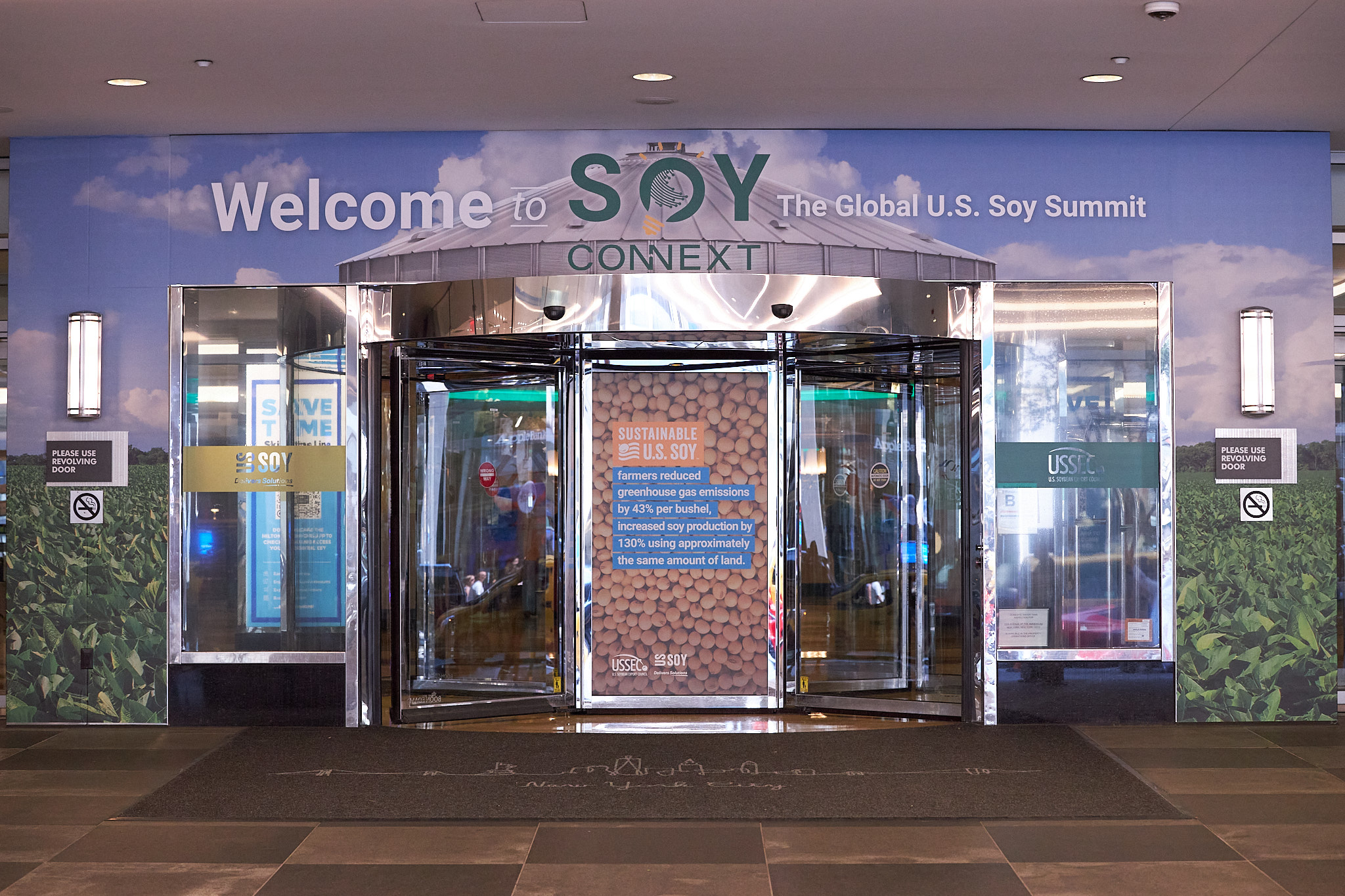
U.S Soy Value Chain Connects with International Customers to Maximize the Utilization, Value, and Access to U.S. Soy around the World
New York, NY, USA – August 23, 2023 – In its second year, Soy Connext, the global U.S. Soy summit hosted by the U.S. Soybean Export Council (USSEC), hosted more than 700 participants, including international customers from 58 countries together with U.S. Soy farmers, related food and agriculture industry professionals, commodity exporters and others to discuss today’s global economy and the need for collaborative efforts among those who grow, sell and choose U.S. Soy.
The need for a nutritious, safe, and affordable global food supply, economic viability for farmers and sustainable solutions were recurring themes throughout the two-day conference. The more than 500,000 U.S. soybean farmers are viewed as major contributors to ensuring people around the world have access to protein-rich, sustainably sourced nourishment. Factors impacting the global economy such as international trade, supply chain challenges and innovations, and the need for global cooperation for mitigating climate change were also examined during conference presentations.
“If this year’s Soy Connext event has underscored anything, it’s that U.S. Soy is truly woven into the fabric of the global economy,” said Jim Sutter, CEO, USSEC. “U.S. soybean meal and oil exported to over 80 countries worldwide help provide nutrition security for a global population and demonstrate the tremendous impact of U.S. Soy farmers’ conservation practices, and U.S. Soy’s lowest carbon footprint around the world. With over half of the world’s food and beverage companies publicly committed to sustainable agriculture[1], the demand for U.S. Soy is poised for growth.”
At this year’s Soy Connext, participants heard engaging presentations on macroeconomics, the geopolitical climate, sustainability and supply chain innovations, while also diving into more sector-specific information including soybean oil, soybean meal for livestock and poultry feed, soybean meal for aquaculture feed, and soy food and beverage production.
Conference speakers included USDA Chief Economist Dr. Seth Meyer, who shared insights from the latest supply and demand numbers for U.S. Soy and its impact on the global food and feed industries relating to the soy complex. Other speaker highlights included:
- Jahangir Aziz, Head Emerging Market Economics, at J.P. Morgan, provided a look at the global financial landscape as it pertains to soybeans and other commodities;
- Katie Gandy, Sustainability Business Development Lead, at S&P Global Sustainable1, discussed risks and benefits of ESG and how focusing on quality, innovation and productivity can create competitive advantage and long-term value;
- Alexis Taylor, Under Secretary for Trade and Foreign Agricultural Affairs for the USDA, addressed the administration’s priorities for meeting the demands of a growing global population and shared that 2023 is expected to be one of the best years for U.S. export of agricultural products; and,
- Farmers from Iowa, Kansas, Michigan and North Carolina, serving as the collective voice of U.S. Soy growers shared valuable insights into their current U.S. Soy crop conditions and forecast for this year’s harvest.
The final day of Soy Connext featured sessions focused on issues impacting the future success of the U.S. Soy export pipeline, including:
- Aaron Hanson, Senior Economist with GlobalData's agriculture division, discussed rising protein consumption and potential for increasing soybean meal in livestock feed rations;
- Maria Villablanca, CEO of The Future Insights Network, examined the benefits to businesses, suppliers and consumers when investments in digital transformation across the supply chain bring efficiency and improved transparency for all points of the global soy value chain;
- Andrew Moriarty, U.S. Director of Commodities at Mintec and the 2023 Soy Connext emcee, explored key takeaways from the event including the importance of trusted relationships as a key indicator of successful trade and business partnerships in the soy supply chain; and,
- Jim Sutter, USSEC CEO, closed out the conference with a call for continued collaboration, innovation and commitment to sustainable growth among the global soybean community to address the most pressing global risks, including the cost-of-living crisis, geoeconomics and climate change[2].
“At USSEC, we are dedicated to serving as a global connector,” said Stan Born, USSEC Board Chair and U.S. Soy Farmer (Illinois). “This year’s Soy Connext was a celebration of the vibrant history of global agriculture, and a look at the technological innovations of today and the future. This annual event is another way USSEC brings together important participants in the global soybean industry to maintain and grow global collaboration.”
About U.S. Soybean Export Council (USSEC)
The U.S. Soybean Export Council (USSEC) focuses on differentiating, elevating preference, and attaining market access for the use of U.S. Soy for human consumption, aquaculture, and livestock feed in 80+ countries internationally. USSEC members represent the soy supply chain including U.S. Soy farmers, processors, commodity shippers, merchandisers, allied agribusinesses, and agricultural organizations. USSEC is funded by the U.S. soybean checkoff, USDA Foreign Agricultural Service (FAS) matching funds, and industry. Visit www.ussec.org for the latest information on U.S. Soy solutions and news about USSEC and U.S. Soy internationally.
This press release was funded in part by the soy checkoff.
# # #
Media Contacts:
Chris Samuel
Director of Global Communications
U.S. Soybean Export Council (USSEC)
+1 (636) 449-6400
Kerrey Kerr-Enskat
Senior Manager, Communications
U.S Soybean Export Council (USSEC)
+1 (515) 823-1848
[1] 2022 S&P Global Corporate Sustainability Assessment
[2] World Economic Forum Global Risks Report 2023